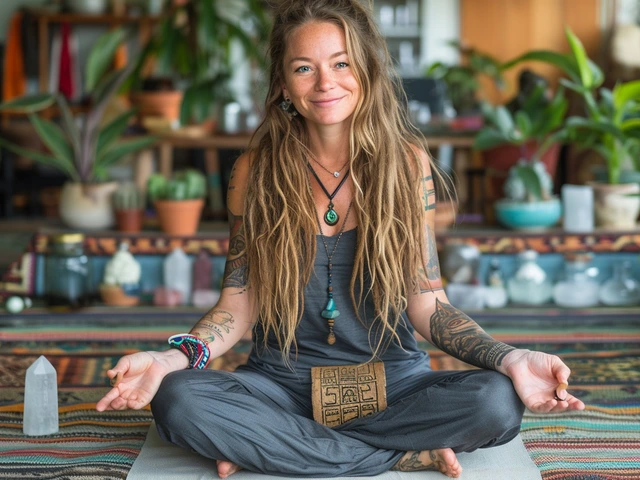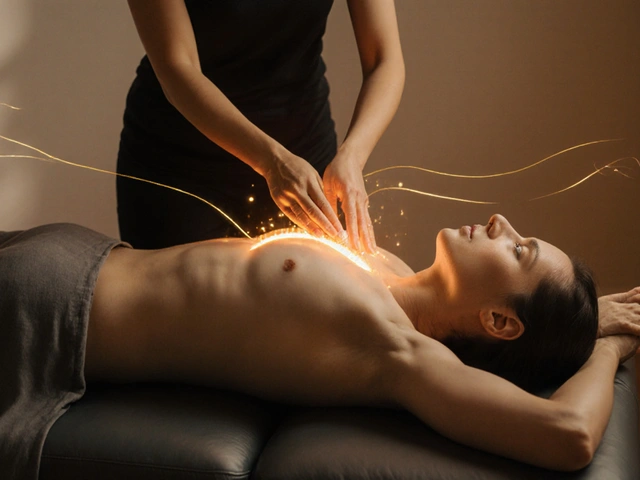Transformation: Massage and Bodywork That Change You
Transformation starts with small, consistent changes. Massage and bodywork aren't magic, but they do shift how your muscles and joints work. Below I explain practical ways therapies produce change and how to choose what fits you.
Types of work
Hands-on therapies like Rolfing, Hellerwork, and structural integration focus on alignment. A Rolfer or Hellerwork practitioner works through fascia and posture to free patterns. Expect gains: sessions stack up, posture improves, and daily movement feels easier. If you sit much, ask a practitioner how they address forward head and rounded shoulders.
Movement-based methods such as Feldenkrais and Feldenkrais-informed yoga teach new movement habits. They use slow movement to rewire how your brain coordinates muscles. This helps flexibility and reduces strain from bad habits. Try short daily lessons and track one concrete change—less pain getting out of bed, for example.
Gentle approaches like Ortho-Bionomy and polarity therapy use light moves and energy-guided touch. These are great when deep work feels too intense or when chronic pain flares. They aim to calm the nervous system, reduce guarding, and restore natural ease. Expect breathing and relaxation techniques to be part of the session.
Traditional and cultural therapies—Hilot, Lomi Lomi, Kahuna, and hammam rituals—combine touch with ritual, rhythm, and breathing. These can shift mood and body tone fast. If you want both mental reset and physical relief, pick a session that includes longer, flowing strokes and time for rest afterward.
Specific tools like warm stones or acupressure target tight spots and stress points. Stone therapy adds heat to relax tissue quickly, while acupressure stimulates points that can reduce headaches and nausea. Combine these with movement work for longer-lasting results.
Trigger point work and targeted tendon treatments focus on problem areas. Trigger point massage relieves knots that limit movement; contractual tendon release and related medical options help when joints or tendons block motion. For stubborn issues, coordinate care with a physical therapist or doctor.
Make change stick
You get more change when self-care matches the session. Simple routines—consistent stretching, short movement lessons, sleep that supports recovery, and gentle home massage—make sessions stick. Track small wins: more range in a certain movement, less nighttime stiffness, or easier daily tasks.
Choose a practitioner by asking about training, what a typical session feels like, and how they measure progress. Don’t hesitate to try two sessions before deciding. A good practitioner explains what to expect, gives home tips, and adjusts work if pain spikes.
Transformation happens over time and with small steps. Pick one therapy to try, stick with it for a few sessions, add a simple home routine, and notice how daily movement gets easier. Real change is practical, steady, and often surprising.
Try a simple three-week plan: week one—book two sessions and set two five-minute movement breaks; week two—add targeted self-massage and sleep adjustments; week three—compare mobility and pain, then tweak frequency. Small steps like this reveal what works and keep improvements real without overwhelming your schedule or ask your practitioner today.

Esalen: Embrace the Journey of Self-Discovery and Transformation
Esalen Institute in Big Sur is more than a retreat-it's a living experiment in human potential. Discover how its timeless practices in mindfulness, bodywork, and presence help people reconnect with themselves beyond therapy and trends.

Discover the Healing Sanctuary of Esalen Institute
Esalen Institute, nestled on the stunning cliffs of Big Sur, California, is renowned for its holistic approach to personal development and healing. With a history steeped in alternative education, Esalen offers a unique blend of workshops, natural hot springs, and breathtaking landscapes. Visitors come to explore new dimensions of wellness, engage in profound personal growth experiences, and reconnect with nature. Whether indulging in a transformative workshop or simply soaking up the serene atmosphere, Esalen provides a haven for rejuvenation and self-discovery.
Categories
- Health and Wellness (148)
- Alternative Therapies (86)
- Massage Therapy (40)
- Travel and Culture (15)
- Beauty and Skincare (9)
- Holistic Health (8)
- Health and Fitness (5)
- Spirituality (5)
- Other (2)
- Personal Development (2)
Popular Articles



